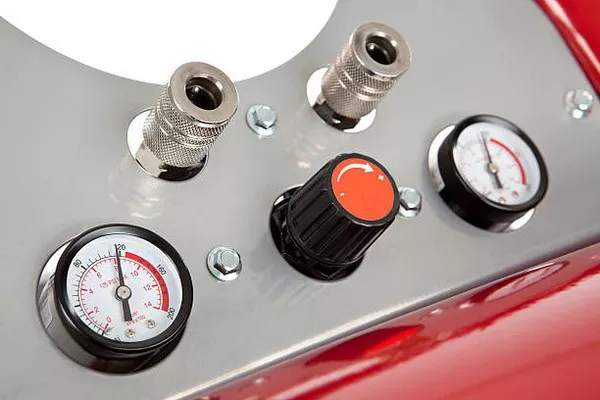In a groundbreaking stride for air compressor innovation, UK Power Networks has unveiled a remarkable achievement – the culmination of 85 years of technological advancement in the form of Lontra’s pioneering ‘Spot’ robotic dog. At the heart of this revolutionary development is Lontra, an engineering technology company spearheaded by visionary Steve Lindsey, who is now set to accelerate the production of their cutting-edge LP2 Blade Blower by fourfold each year until 2025.
With its sights firmly set on addressing escalating demand, this ambitious undertaking aims to not only meet burgeoning industry needs but also usher in a new era of environmentally sustainable air delivery solutions for industrial contexts worldwide.
Central to this innovation is Lontra’s distinct, patented, and proven Blade Compressor® positive displacement technology. This technology is seamlessly integrated into the customized LP2 Blade Blowers, enriched by the design and product lifecycle management prowess of PTC’s Creo and Windchill platforms. This integration grants the LP2 Blade Blowers unparalleled performance capabilities, reduced noise emission, and a significant electricity savings of up to 34% compared to conventional products.
Already generating interest from the US, which accounts for nearly a quarter of the global market, the company anticipates a recruitment drive to further augment its workforce, which has already doubled over the past year.
Steve Lindsey, the visionary behind Lontra, expressed his enthusiasm, saying, “The sight of the first LP2 Blower rolling off the production line marks a pivotal moment for our company. This event heralds the first commercial breakthrough in air compressor technology witnessed in 85 years, and its arrival is timely. Industries relying on these products to power manufacturing lines, drive furnaces, convey materials, and facilitate various processes have, for far too long, incurred significant environmental costs. Compressors are responsible for an astonishing 10% of Europe’s industrial electricity consumption, translating to over 10TWh (Terawatt-hours) of annual power usage and approximately 4.3 million tons of CO2 emissions.”
Lindsey continued, “We have introduced an innovation designed and manufactured in the UK, underpinned by our investment in the Smart Manufacturing Centre. This capability empowers us to rapidly scale up and cater to what we anticipate will be an overwhelming demand.”
A pivotal contributor to Lontra’s success story is Inneo Solutions, the driving force behind Lontra’s adoption of PTC’s cloud-based 3D CAD Design software, Creo. This platform was instrumental in achieving the complex geometry that sets the LP2 Blade Blower apart from its predecessors. Additionally, the integration of finite element analysis (FEA) and behavior modeling within Creo contributed to meeting the stringent requirements for stillness and distortion, culminating in the delivery of an environmentally sustainable performance.
Daryl Koch of Inneo Solutions elaborated, “To optimize both mechanical and thermodynamic performance simultaneously, data from PTC Creo feeds directly into BladeSim, Lontra’s in-house software suite for virtual prototyping. These tools are vital in enhancing compression, internal leakage, heat transfer, and tuning silencers and ancillaries for comprehensive system optimization.”
Furthermore, Lontra’s portfolio is fortified by Windchill, PTC’s product lifecycle management (PLM) suite, which has ushered in efficiencies that extend to sustainability by curbing both time and waste. Windchill ensures accurate records of materials and components, capturing insights from the design and development process, while also minimizing errors, waste, and scrap on the factory floor.
Elliot Clarke, UKi Director at PTC, affirmed the software’s impact: “Both of Lontra’s sites leverage Windchill’s capabilities, and the software is accessible to the firm’s remote teams, encompassing designers, purchasing personnel, manufacturing engineers, CNC specialists, assembly experts, and quality control. The software’s power guarantees that all stakeholders operate using the most current data. In the future, the company plans to extend access to select suppliers as well.”
The digital thread emerges as a cornerstone of Lontra’s next phase of expansion, synergizing the connectivity intrinsic to the LP2 Blower’s design with its over 25 internal smart sensors. This ambitious endeavor is spearheaded by Lontra Digital, an innovative arm of the business entrusted with the design and development of a proprietary, state-of-the-art cloud-based technology stack named LontraEDGE. This technology stack, in conjunction with the next-generation UI platform LontraLENS, empowers the company and its clientele to remotely monitor the efficiency and health of units installed in manufacturing and water treatment facilities.
Steve emphasized, “Nearly every factory houses maintenance personnel or teams responsible for machine upkeep. These individuals, spending their days in and around these machines, can intuitively identify anomalies even before alarms are triggered. This invaluable expertise is dwindling as older workers retire. Data collection and machine learning, however, offer a transformative solution, allowing these experts to oversee operations in multiple factories across the globe from a centralized location.”
In conclusion, Steve remarked, “Lontra Digital will significantly enhance reliability and efficiency while curbing downtime for our clients.”

